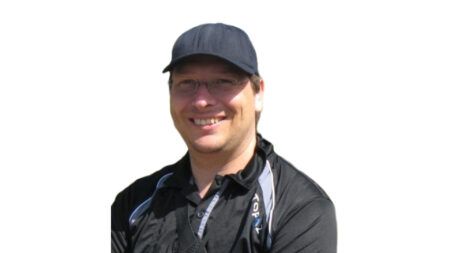Garnet Ridgway says: For specific products such as fast jets, the number of design iterations performed over the years is such that the industry has converged toward a very small number of solutions. Consider, for example, the vast number of different types of second-generation fighter jets in service during the Cold War, compared with the handful of fifth-generation types of the modern era.
A consequence of this is that modern test programs tend to be few in number and vast in scale, and can last for many years. Within such a construct, the scope for an individual to make a considerable contribution is greatly reduced; personality is effectively bulldozed by process. Although this may be beneficial to the end product, it can be a source of frustration to those who, in past generations, would have solved problems by sheer determination and personal flair.
Similarly, modern testing is far more predictable than was the case in the past. The outcome of many tests is almost a foregone conclusion due to advances in pre-test activities such as laboratory demonstrations and simulation; very few modern practical testing activities are the leaps into the unknown that generate genuine excitement. This makes test programs far less reactive and therefore more methodical, with scope for planning well in advance.
Consider also the cost implications of such vast programs, and one understands the tendency toward risk-aversion. Nobody can deny that this is a good thing in the long-term, but it removes an element of excitement that was a feature of aerospace testing in the past. It should also be noted that testing of novel aerospace concepts is anything but a modern trend. Indeed, the effect of design convergence is such that such novel concepts were far more common than they are today. Imagine the challenges faced testing the Harrier, Concorde, the Fairey Rotordyne or the SR-71. While so-called novel concepts these days may appear to be exciting and innovative, they are in fact simply variations on the aforementioned design convergence – a V-22 is just a helicopter with a party trick; a UAV is just a clever autopilot.
Today’s testing is more effective in delivering safe capability to end users; something of which we should all be proud. However, it doesn’t necessarily mean that the job is as much fun as it used to be!
Garnet Ridgway has a PhD from the UK’s University of Liverpool. He has designed cockpit instruments for Airbus and currently works for a leading UK-based aircraft test and evaluation organization
Sophie Robinson says: There has never been a better time for a career in aerospace testing. Consider the products that are currently being tested; the capabilities of an aircraft such as the F-35 are surely beyond the wildest dreams of previous generations of aerospace engineers. The challenges associated with testing a highly autonomous, supersonic, VTOL aircraft surely surpass anything faced previously; those challenges are what give aerospace testing professionals their job satisfaction.
Aside from the recent step in capability, the novel concepts currently in development can challenge the very fundamentals of testing methods and philosophies. For example, novel configurations such as tiltrotors require the development of novel test techniques for handling qualities evaluation; this isn’t simple repetition of past programs, this is cutting-edge research combined with practical testing. Similarly, advances in aerospace technology are pushing back the boundaries of areas such as human factors. Can a pilot cope with the demands of flying his own aircraft while also remotely managing a swarm of UAVs? The technology is in place from an engineering perspective, but the domino effects on aspects previously considered ‘peripheral’ are very exciting indeed.
It could be argued that an element missing from modern testing is the burning urgency and competition associated with an arms race. However, the absence of a single, tangible adversary does not mean that current testing programs are leisurely, relaxed affairs. Indeed, ever-shrinking budgets and ever-increasing demands for safety apply pressures of their own; there is no shortage of battles to be fought.
The ultimate aim of aerospace testing is to deliver safe capability to the end user, and it is a fact that the industry is closer than ever to achieving this aim. Of the 337 English Electric Lightning interceptors produced in the 1950s and 1960s, more than a quarter were lost in accidents – many of them fatal. Owing in part to advances in aircraft test and evaluation, this figure is absolutely unthinkable today. On the basis that aerospace testing professionals are making a bigger contribution than ever to flight safety, how could it possibly be argued that there was ever a better time to be involved in the industry?
Sophie Robinson works at the front line of aerospace testing as a rotary-wing performance and flying qualities engineer for a leading UK-based aircraft test organization. She also holds a PhD in aerospace engineering from the University of Liverpool




